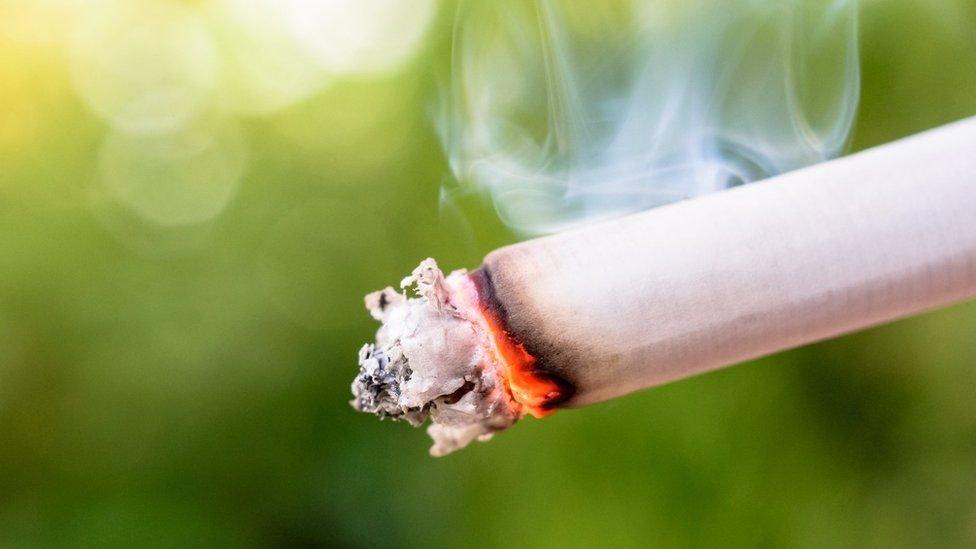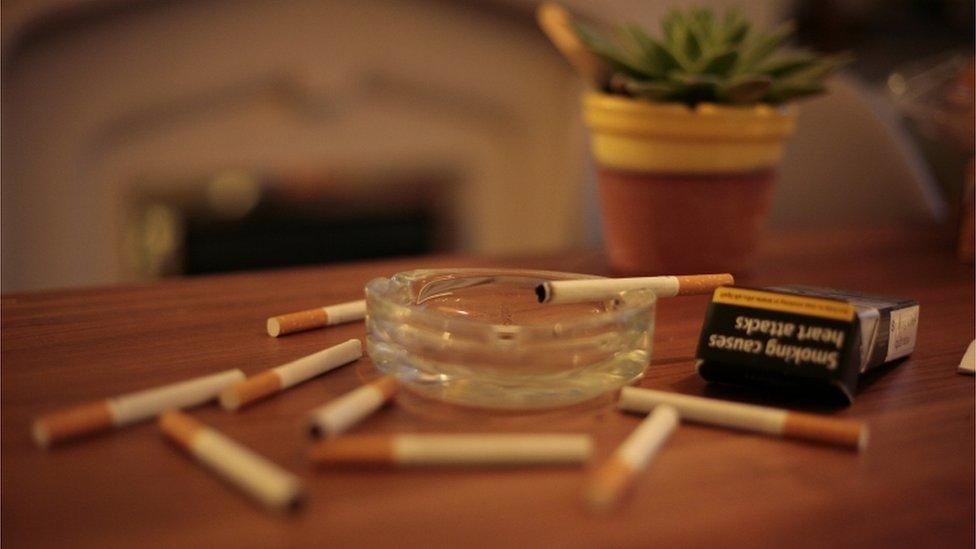Smoking rates highlight Bristol's health inequalities
- Published

Overall smoking rates have declined in Bristol in recent years
Bristol's smoking rates have highlighted "entrenched" health inequalities, a report has found.
Christina Gray, the city's director of public health, said declining smoking rates had exposed "big inequalities" between rich and poor.
There is a "wide variation" of smoking rates, with it "concentrated among more disadvantaged communities and groups".
She added: "On average, smokers die 10 years younger than non-smokers."
"Tobacco smoking remains the single largest cause of preventable ill-health and premature death, the largest driver of inequalities in health and the leading modifiable risk factor for poor pregnancy outcomes," she said.
"Over the last year we have seen smoking contribute to increased risk of Covid-19 and Covid-19 complications, contributing to inequality in terms of Covid-19-related disease."
About 18% of Bristol's population currently smoke - equating to 66,000 people.
This is "significantly higher" than the England average of 13.9%.
The report - Pause, Breathe, Reflect: Lessons from Covid-19 - said that more than 100 residents die prematurely - before the age of 75 - each year from a lung illness.

About 10% of women smoke during pregnancy in Bristol
This does not include lung cancer deaths, which are about the same number again.
Between 2015 and 2019, 35% of all premature deaths caused by respiratory disease occurred in the most deprived areas of Bristol, compared with only 7% in the least deprived wards, the report said.
The highest rates were in Lockleaze while the lowest was in Clifton Down, the Local Democracy Reporting Service said.
Most deprived
Ms Gray said: "Around one in four people in routine and manual occupations smoke, compared with one in 10 people in managerial and professional occupations.
"People who are unemployed are almost twice as likely to smoke as those in work."
In 2019 almost 10% of pregnant women smoked, with those from more disadvantaged backgrounds most likely to do so, LDRS, external reported.
While overall smoking rates have declined "the gap between the healthiest and least healthy has widened and the number of years lived in poor health has increased", she said.
"The challenge now is to understand and reduce the harms from smoking within the most vulnerable communities and high-need neighbourhoods in Bristol."
'Reduce inequalities'
Her report said goals in the One City Plan included for it to be the norm by 2029 for no pregnant women to smoke and all to live in a smoke-free home, and for less than 3% of residents to smoke by 2046.
Despite the report's warnings, Ms Gray is optimistic that Bristol will improve lung health and "reduce the inequalities" in the future.
- Published2 November 2021

- Published13 May 2021

- Published19 March 2021
